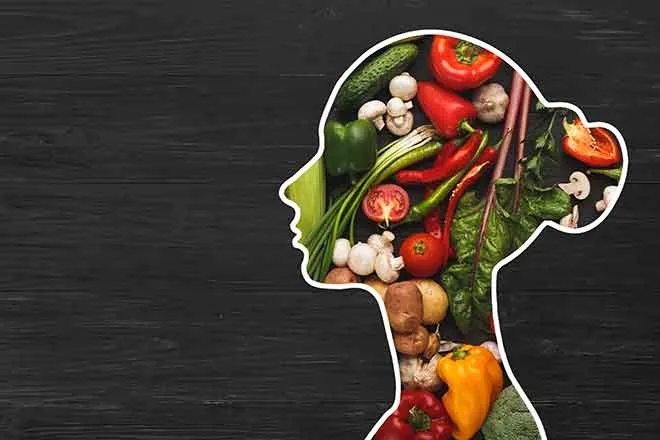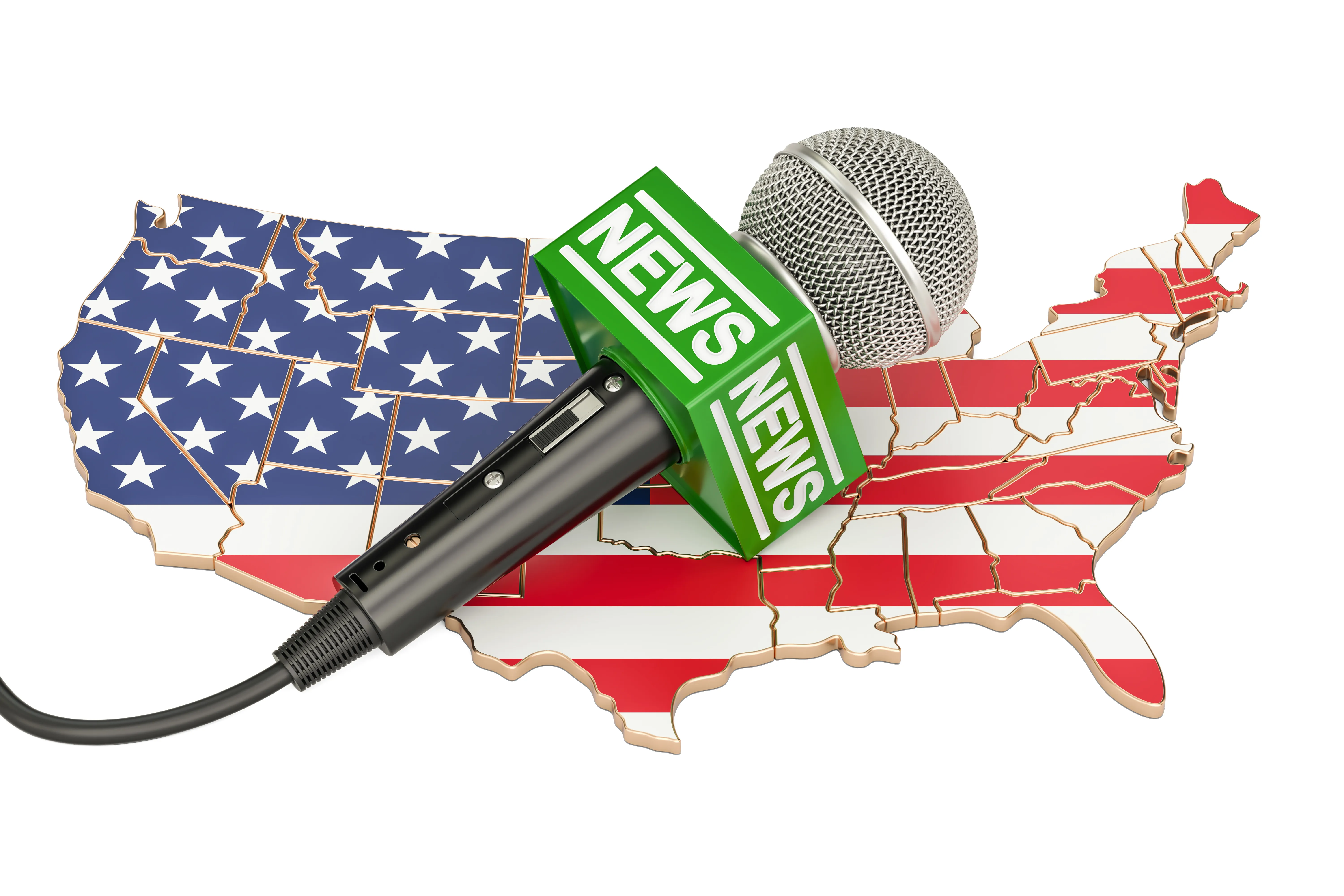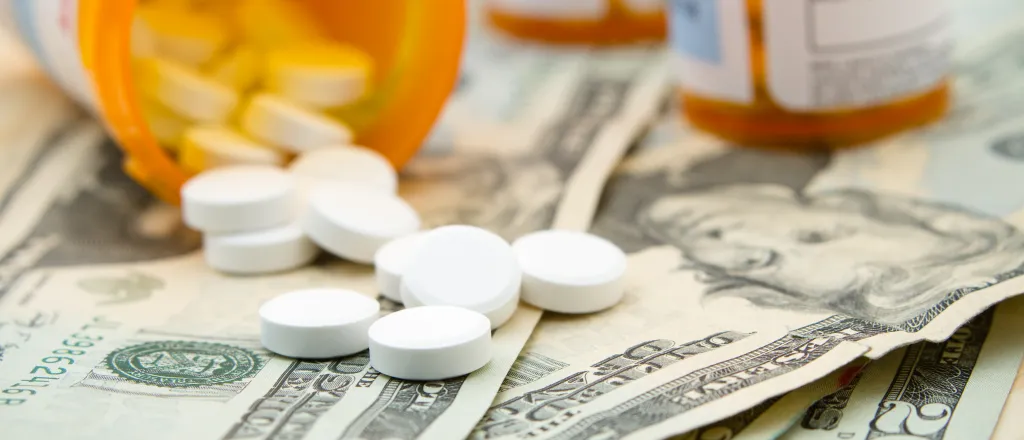
Dozens of states tackle high prescription drug costs
In the absence of much federal action, states have enacted dozens of laws this year to lower prescription drug costs for their residents — and many more are considering following suit.
States cannot lower drug prices directly, but they can go after different parts of the drug supply chain to try to lower patients’ out-of-pocket costs and reduce excessive spending in state-run health plans.
Nearly two-thirds of the new state laws are aimed at pharmacy benefit managers — the drug middlemen who negotiate deals among the manufacturers that make the drugs, the insurers that allow the drugs to be prescribed, and the pharmacies that sell them.
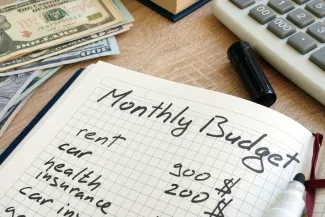
Several states are considering drug affordability review boards. Others have passed laws to hold manufacturers and PBMs to higher transparency standards.
“So a lot of states went into looking at drug costs — trying to understand and follow the dollar,” said Maureen Hensley-Quinn, a senior program director at the National Academy for State Health Policy, a nonpartisan group that works on health policy issues. “Is it the price that manufacturers are setting? Is it the supply chain where there are different entities?”
Advocates of these laws say it’s up to states to take the lead as the federal government lags in compelling drug companies and insurers to lower prices for patients. But critics say some state interventions could lead to local pharmacies shuttering and may stifle innovation in the pharmaceutical industry, leading to fewer new drugs.
Laws targeting PBMs are wide-ranging in scope, requiring PBMs to pass discounts on to consumers or to be more transparent in their drug purchasing activities. Some states have created drug affordability review boards to assess manufacturers’ prices. Some laws aim to place copay caps on critical medications like insulin.
So far this year, at least 31 states have enacted nearly 70 laws designed to lower drug costs, according to a state drug affordability law tracker from the National Academy for State Health Policy.
“States have no leverage, really, to put pressure on manufacturers to lower their prices, and that’s why I think most of the legislation at the state level has been on the intermediaries, the supply chain,” said Geoffrey Joyce, chair of the Department of Pharmaceutical and Health Economics at the University of Southern California.
Those interventions can go a long way in trying to reduce patients’ expenses, he said.
“The concern [is] about, well, ‘States really can’t lower drug prices, per se,’ but they can,” Joyce said. “I think there’s been evidence.”
California Democratic Governor Gavin Newsom in October signed legislation to cap the cost of insulin for people covered by state-regulated health plans, including the state’s Affordable Care Act marketplace, private health plans and its Medicaid program. The state also plans to start offering its own generic version of insulin, costing just $11 a pen, in January.
Colorado’s drug affordability review board capped the cost of a widely used rheumatoid arthritis medication.
And Maryland Democratic Governor Wes Moore signed a law in May to expand the authority of the state’s drug affordability review board to lower prescription drug prices for all residents, not just state employees.
Pointing fingers
The federal government has taken some steps to lower prescription drug prices. The Inflation Reduction Act under the Biden administration created annual caps on out-of-pocket drug costs and capped the cost of insulin at $35 a month for patients with Medicare, the health care program that primarily serves people over 65. The law also gave the federal government more power to negotiate drug prices for Medicare patients.
President Donald Trump has promised to slash drug prices by percentages that some experts say are mathematically impossible. He threatened tariffs on manufacturers that import their drugs if they didn’t lower their prices, which led to a deal with biopharmaceutical company Pfizer. And in May, he signed an executive order designed to ensure the U.S. government can secure drugs at prices on par with other nations.
Kush Desai, a spokesperson for the White House, said in a statement that the Trump administration’s website, TrumpRx, which hasn’t yet launched, will lower drug costs by allowing people to purchase drugs directly from the manufacturer.
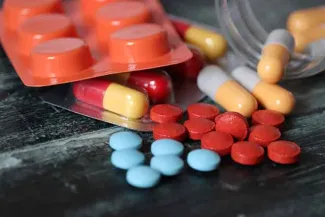
© iStock - Oleg Elkov
But some states are going further.
In October, Colorado became the first state to cap the price of a prescription drug for all consumers. Starting in 2027, new insurers and patients will pay no more than $31,000 a year for Enbrel, a drug that treats rheumatoid arthritis and other autoimmune diseases — a sharp decrease from the average insurance payment of $53,049 in 2023. Nearly 2,600 Coloradans used Enbrel in 2022, according to state research.
Colorado Democratic state Senator Julie Gonzales, who sponsored the bill creating the state’s drug oversight board, said states have to deal with a lot of competing interests in the drug supply chain. When it comes to establishing who is setting high drug prices, she said, “everyone is pointing the finger at everyone else.”
It took four years from the law’s passage to set up the board and approve its first payment limit because there were so many special interests involved, she said. “We had to overcome a tremendous amount of angst and fear.”
Maine, Maryland, Minnesota, Oregon and Washington also have prescription drug affordability boards. New Hampshire created a board but dissolved it in July because of budget cuts.
In California, Newsom signed a bill this year to cap the consumer copay of insulin at $35 per month for all state-regulated health plans, after vetoing similar legislation in 2023. More than two dozen other states had already opted to cap insulin for state health plans. He also signed a PBM regulation bill that, among other provisions, requires pharmacy benefit managers to pass drug discounts on to payers and patients.
California Democratic state Senator Scott Wiener, who sponsored the PBM and insulin bills, said states have the power to lower patients’ out-of-pocket expenses, even if they can’t force manufacturers to lower drug prices.
“The federal government right now is a disaster zone when it comes to health care,” Wiener said. “That’s why it’s more important for the states to step up.”
Other states such as Illinois, Iowa and Louisiana enacted similar PBM laws this year, according to the National Academy for State Health Policy.
A complicated system
The system for developing, selling and distributing prescription drugs is complex.
Pharmaceutical companies determine the initial costs of drugs, but are often accused of setting prices too high. Pharmacy benefit managers say they exist to negotiate lower drug prices, but are often accused of pocketing discounts or engaging in predatory practices. Meanwhile, health insurers pay for the drugs and decide what copays patients may end up with, and are often accused of not reimbursing enough.
Experts note that three pharmacy benefit management companies — CVS Health, Cigna and United Health Group — dominate the PBM industry, which adds to concerns about their market power.
“There’s also some truth to the fact that this industry is very concentrated, and there’s not a lot of transparency around how much money they’re making and how they make their money, and if that’s being shared back with plans and with consumers,” said Pragya Kakani, a health economist specializing in drug policy at the Weill Cornell Medical College.

The pharmaceutical industry typically opposes drug affordability boards.
In Colorado, Amgen Inc., the manufacturer of Enbrel, sued the state in 2024 over its drug affordability review board, alleging that a price cap would cause economic harm to the company. A federal district court dismissed the challenge in March.
“Instead of fixing the root causes of patient affordability concerns, the board has rushed into a reckless experiment,” Reid Porter, senior director of state public affairs for PhRMA, a group that represents pharmaceutical companies, wrote in an email statement in regard to the board’s upper payment limit. “Colorado is risking patient access and jeopardizing the development of new medicines.”
Porter argued that PBMs and health insurers, not drugmakers, drive high costs.
But PBMs say their negotiations lower costs.
“Big Pharma sets the price — and the price is the problem when it comes to Americans facing difficulty affording their prescription drugs,” Mike Baldyga, a spokesperson for the Pharmaceutical Care Management Association, which represents pharmacy benefit managers, wrote in an email statement. “PBMs are the only entity in the drug supply chain that lower prescription drug costs on behalf of patients, and there is no correlation between the rebates they negotiate and list prices.”
Hensley-Quinn, of the National Academy for State Health Policy, noted the challenge of making drugs affordable and accessible.
“There is no silver bullet for lowering drug costs,” Hensley-Quinn said. “You have to balance being able to innovate and making sure that drugs are affordable so that what you have just created, which is life-changing, actually gets to the people that need it.”
But this challenge is in some ways expected and more evidence that states must take action, said Priya Telang, communications manager at the nonprofit advocacy group Colorado Consumer Health Initiative.
“Manufacturers point the finger at PBMs, and PBMs point the finger at insurers. And so it’s really hard to get a sense of who the actual bad players are all at the same time,” she said.
“And so that’s why it’s critical for affordability boards to exist, because they get to see the data, they get to see behind closed doors what the root causes are and really work to bring affordability to consumers.”
Drug affordability boards
When Mary Fowler Simmons, 54, was diagnosed with an advanced cancer three years ago, she had to give up her steady job as a state government worker in Virginia to go through months of expensive and painful treatment. Fowler Simmons survived and is cancer-free today, but is still reeling financially.
Fowler Simmons told Stateline that after being saddled with a hospital bill totaling over $323,000 and depleting her savings, she and her husband continue to pay around $300 a month — after insurance — for prescription medications to maintain her health.
Fowler Simmons, who also has Type 2 diabetes, says she wants her state and federal lawmakers to recognize that some Americans are having to choose between paying for their next meal or their necessary prescription drugs.
“They need to have more compassion for people. We’re not in the position that we are making millions, that we can afford this. We’re working-class people,” Fowler Simmons said. “I need them to actually consider what they are doing to the American people and just have affordable prescription drugs available.”
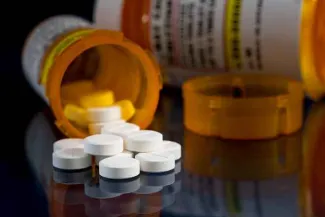
© iStock - BackyardProductions
Otto Wachsmann, a Republican in the Virginia House of Delegates and a pharmacist, said that he doesn’t think there’s enough evidence yet that prescription drug affordability review boards work.
He said if states set upper payment limits on drugs, that doesn’t mean a pharmaceutical company would necessarily lower the cost. Rather, he says, pharmacies may just get reimbursed even less than the cost of the drug. This year Virginia lawmakers tried to create a drug affordability review board.
“There’s nothing to prevent the board from saying we’re only going to reimburse $100 for this prescription, although those pharmacies may have to pay $120 for the drug,” Wachsmann said in an interview.
He added that if review boards target expensive and rare drugs for which to set upper payment limits, they could stifle innovation.
“If those manufacturers think that those are the type of drugs that are going to get hit by these boards and they realize they’ll never get their investment back, they’re not going to develop those drugs anymore,” Wachsmann said.
Virginia Republican Governor Glenn Youngkin vetoed a bill this year that would have created a drug affordability board in the state, saying in a statement, “This approach could limit access to treatments and hinder medical innovation, especially for life-threatening or rare diseases.”
Wachsmann had voted against the board. Instead, he says it’s better to target PBMs, because he said they are engaging in predatory practices that freeze out small pharmacies and leave consumers with nowhere to go.
Neighboring Maryland created the nation’s first drug affordability board in 2019; it got a boost of resources and revved up activities in 2023.
“It will not hurt pharmacists. It will help everybody except Big Pharma,” said Vincent DeMarco, president of health care advocacy group Maryland Health Care for All, in speaking about the state’s drug affordability review board.
The original bill creating the board only authorized the board to create upper payment limits for drugs purchased by states and local governments in Maryland. But this year, Moore signed a law to expand the authority of the board to create upper payment limits for everyone, except patients on health plans regulated by the federal government.
DeMarco said he’s hoping the board will move to create limits on two popular drugs prescribed for Type 2 diabetes, Jardiance and Farxiga.
“In addition to individuals who can’t afford their drugs, all of us pay the price in higher health insurance premiums, because a big part of our health insurance premiums is high-cost drugs,” DeMarco said.

